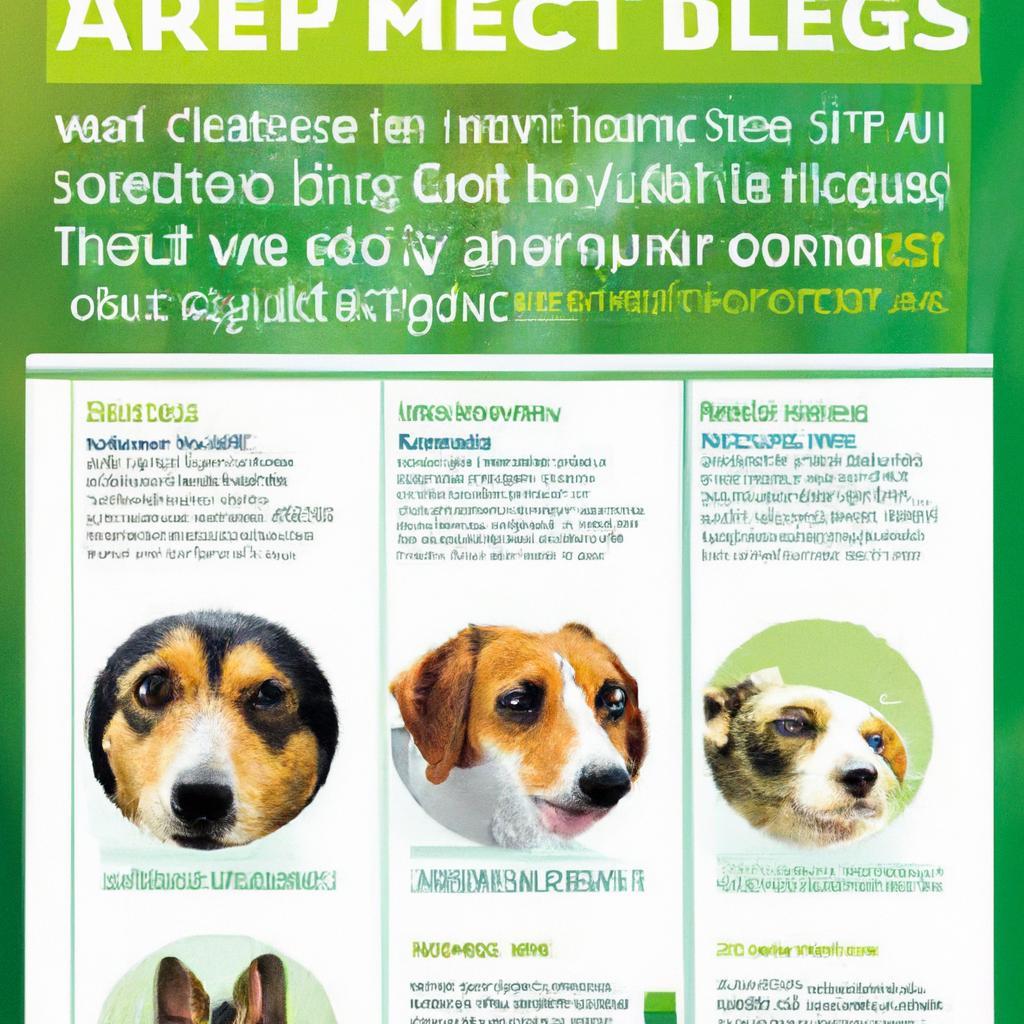Meet Sarah, a devoted dog lover who dreamed of owning a furry companion. After researching, she found a hypoallergenic breed that seemed perfect. Excited, she brought home a charming Poodle. But to her dismay, she soon experienced allergy symptoms. How could this be? Hypoallergenic dogs are often touted as the solution for allergy sufferers, yet they can still produce allergens. If you’re considering a hypoallergenic dog, consult with an allergist first. Your dream pet might still be within reach, but knowledge is key!
Contents
- Understanding Hypoallergenic Dogs and Allergic Reactions
- The Science Behind Dog Allergies and Hypoallergenic Breeds
- Practical Steps to Minimize Allergic Reactions with Hypoallergenic Dogs
- Choosing the Right Hypoallergenic Dog for Your Lifestyle and Health Needs
- Q&A
Understanding Hypoallergenic Dogs and Allergic Reactions
When considering a hypoallergenic dog, it’s essential to understand what the term truly means. Hypoallergenic breeds are often touted as being less likely to trigger allergic reactions in sensitive individuals. This is primarily due to their lower production of allergens, such as dander, saliva, and urine. However, it’s important to note that no dog is completely free of allergens. Even hypoallergenic breeds can produce some level of these irritants, which means that allergic reactions can still occur.
Many people mistakenly believe that owning a hypoallergenic dog guarantees a life free from allergies. In reality, individual reactions can vary significantly. Factors such as the specific breed, the dog’s grooming habits, and the owner’s unique sensitivities all play a role in determining whether an allergic reaction will occur. For instance, breeds like the Poodle or Bichon Frise are often recommended for allergy sufferers, but some individuals may still experience symptoms when interacting with these dogs.
To minimize the risk of allergic reactions, potential dog owners should consider several strategies. These include:
- Regular grooming: Frequent brushing and bathing can help reduce the amount of dander and saliva that accumulates in the home.
- Creating a pet-free zone: Designating certain areas of the home, such as the bedroom, as pet-free can provide a safe haven for allergy sufferers.
- Using air purifiers: Investing in high-quality air purifiers can help filter out allergens and improve indoor air quality.
- Consulting with an allergist: Professional advice can help identify specific allergens and recommend appropriate measures to manage symptoms.
Ultimately, the decision to bring a hypoallergenic dog into your home should be made with careful consideration of your personal health and lifestyle. While these breeds may offer a reduced risk of allergic reactions, it’s crucial to recognize that individual experiences can differ. Engaging in thorough research and taking proactive steps can help ensure a harmonious relationship between you and your new furry companion, even if you have a history of allergies.
The Science Behind Dog Allergies and Hypoallergenic Breeds
Understanding the intricacies of dog allergies requires a closer look at the proteins that trigger allergic reactions. Contrary to common belief, it’s not just dog fur that causes allergies; it’s primarily the proteins found in dog saliva, urine, and skin. When dogs groom themselves, these proteins are transferred to their fur, and when the fur sheds, it can become airborne, leading to allergic reactions in sensitive individuals. This means that even breeds marketed as hypoallergenic can still produce allergens, albeit in lower quantities.
Hypoallergenic breeds, such as Poodles and Bichon Frises, are often touted as safer options for allergy sufferers. These breeds typically have hair instead of fur, which reduces the amount of dander and allergens released into the environment. However, it’s important to note that no dog is completely free of allergens. The term “hypoallergenic” simply indicates that these breeds are less likely to trigger allergic reactions compared to others. Therefore, individuals with severe allergies may still experience symptoms, even with these breeds.
Another factor to consider is the individual variability in allergic responses. Each person’s immune system reacts differently to allergens, meaning that while one person may thrive with a hypoallergenic breed, another may still find themselves sneezing and itching. It’s crucial for potential dog owners with allergies to spend time with the breed they are considering before making a commitment. This firsthand experience can help gauge their personal reaction and determine if the breed is a suitable match.
In addition to breed selection, maintaining a clean environment can significantly reduce allergic reactions. Regular grooming, vacuuming, and using air purifiers can help minimize the presence of allergens in the home. Furthermore, consulting with an allergist can provide tailored strategies for managing symptoms. By combining the right breed choice with effective cleaning practices, allergy sufferers can enjoy the companionship of a dog while minimizing discomfort.
Practical Steps to Minimize Allergic Reactions with Hypoallergenic Dogs
When considering a hypoallergenic dog, it’s essential to take proactive measures to reduce the likelihood of allergic reactions. Start by choosing the right breed that aligns with your lifestyle and allergy sensitivities. Breeds such as Poodles, Bichon Frises, and Maltese are known for producing fewer allergens. Researching and connecting with reputable breeders can also ensure you find a dog that has been raised in a clean environment, minimizing exposure to potential allergens.
Establishing a clean living space is crucial for managing allergens effectively. Regularly vacuuming carpets and upholstery with a HEPA filter can significantly reduce dander and hair accumulation. Additionally, consider using air purifiers equipped with HEPA filters to help trap airborne allergens. **Washing your dog’s bedding** and toys frequently, along with maintaining a tidy home, will further decrease the presence of allergens.
Implementing a grooming routine is another practical step to minimize allergic reactions. Regularly brushing your dog outside can help remove loose hair and dander before it enters your home. **Bathing your dog** every few weeks can also reduce the amount of allergens they carry. If possible, enlist the help of a professional groomer who understands hypoallergenic breeds and can provide specialized care.
it’s important to establish boundaries within your home. Designate certain areas, such as bedrooms, as pet-free zones to limit allergen exposure. **Using washable covers** on furniture and keeping your dog off the couch can also help manage allergens. By combining these strategies, you can create a harmonious living environment that accommodates both your health needs and your desire for a furry companion.
Choosing the Right Hypoallergenic Dog for Your Lifestyle and Health Needs
When considering a hypoallergenic dog, it’s essential to understand that not all breeds are created equal. Some breeds are known for producing fewer allergens, but individual reactions can vary significantly. Factors such as the dog’s size, coat type, and grooming needs can influence your experience. Therefore, it’s crucial to research and select a breed that aligns with your specific health requirements and lifestyle.
Before making a decision, consider the following characteristics of hypoallergenic breeds:
- Coat Type: Breeds with hair instead of fur, like Poodles and Bichon Frises, often shed less dander.
- Size: Smaller dogs may be easier to manage in terms of grooming and space, which can be beneficial for those with allergies.
- Energy Level: Active breeds may require more exercise, which could impact your ability to care for them if you have health concerns.
Additionally, it’s important to consider your living environment. If you live in a small apartment, a smaller hypoallergenic breed may be more suitable. Conversely, if you have a large yard and enjoy outdoor activities, a larger breed with hypoallergenic traits might be a better fit. Always assess how much time you can dedicate to grooming and exercise, as these factors can significantly affect your allergy management.
spend time with potential breeds before making a commitment. Visiting breeders or shelters can provide insight into how your body reacts to specific dogs. Remember, even hypoallergenic dogs can produce allergens, so it’s wise to ensure compatibility before bringing a new furry friend into your home. By taking these steps, you can find a hypoallergenic companion that complements your lifestyle while minimizing allergy concerns.
Q&A
-
What does “hypoallergenic” mean?
Hypoallergenic dogs are breeds that are less likely to trigger allergic reactions in sensitive individuals. This is often due to lower levels of dander, saliva, and urine, which are common allergens. However, “hypoallergenic” does not mean “allergy-free.”
-
Can I still have an allergic reaction to a hypoallergenic dog?
Yes, it is possible to be allergic to hypoallergenic dogs. While these breeds may produce fewer allergens, they can still produce enough to trigger reactions in sensitive individuals. Each person’s allergy threshold varies, making it essential to spend time with the breed before making a commitment.
-
Are some hypoallergenic breeds better for allergy sufferers?
Certain hypoallergenic breeds may be better suited for allergy sufferers due to their specific coat types and grooming needs. Breeds like Poodles, Bichon Frises, and Maltese are often recommended. However, individual reactions can vary, so it’s crucial to research and interact with the breed beforehand.
-
What can I do to minimize allergic reactions to hypoallergenic dogs?
To reduce allergic reactions, consider the following strategies:
- Regular grooming and bathing of the dog.
- Using air purifiers to filter allergens.
- Establishing pet-free zones in your home.
- Consulting with an allergist for personalized advice.
Implementing these measures can help create a more comfortable environment for allergy sufferers.
while hypoallergenic dogs may reduce allergy symptoms for some, they are not a guaranteed solution. If you’re considering adding a furry friend to your home, consult with an allergist to ensure a harmonious match for your health and lifestyle.

大家好,我是彼得潘,專業的手法身體治療師。我喜歡探索和研究各種主題,並透過與人工智慧的合作分享專業、實用、有趣的文章。我們定期進行人工審核,以確保內容的準確性。如果您發現文章中有任何不準確的地方,請隨時與我們聯繫,我們會及時糾正。您可以透過 [email protected] 與我們聯繫。



